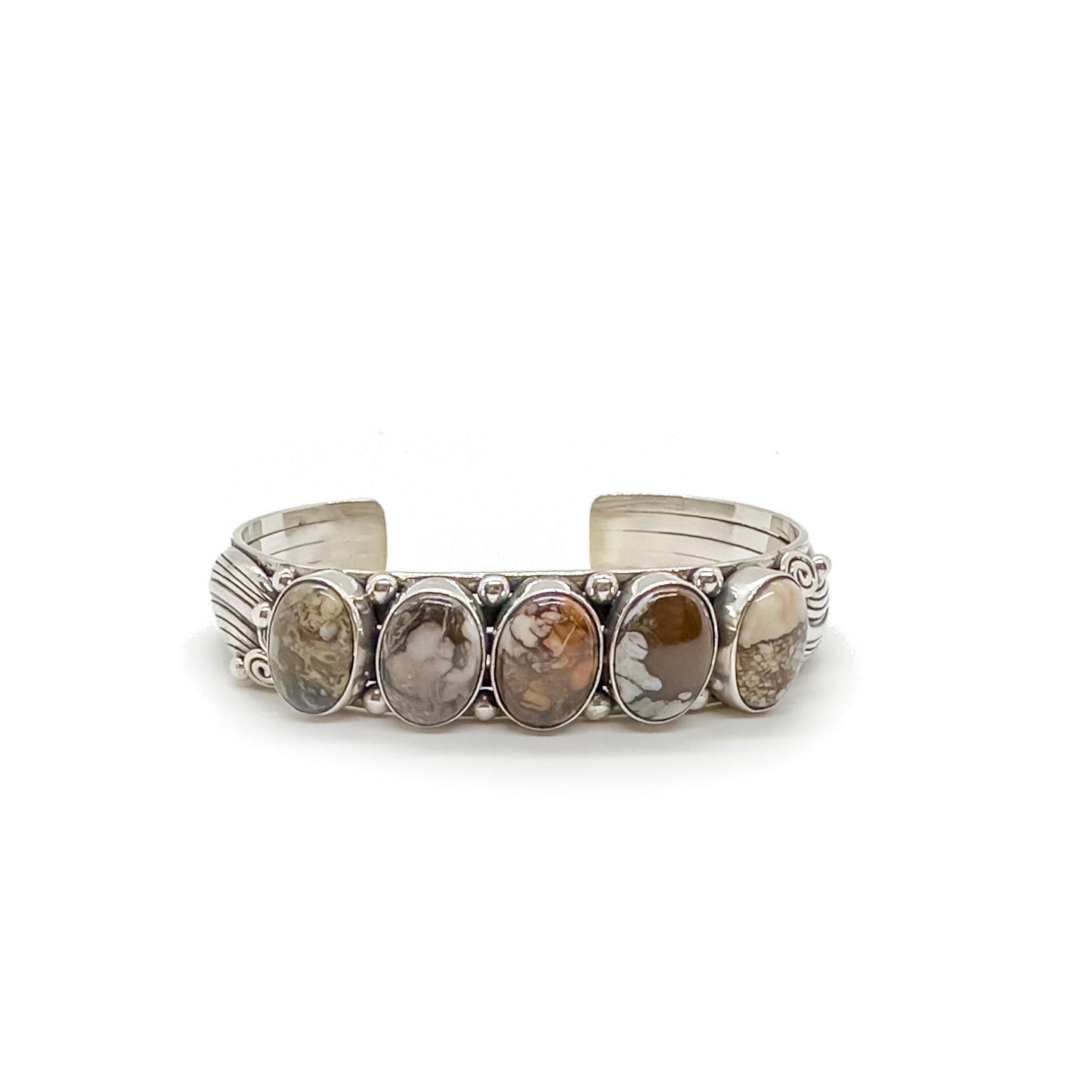1
/
of
1
Authentic Navajo
Navajo Wild Horse Jasper Five-Stone Sterling Silver Cuff Bracelet
Navajo Wild Horse Jasper Five-Stone Sterling Silver Cuff Bracelet
regular price
$449.95 USD
regular price
sale price
$449.95 USD
unit price
/
per
Shipping calculated at checkout.
couldn't load pickup availability
Navajo Wild Horse Jasper Five-Stone Sterling Silver Cuff Bracelet
Fit:
Medium
Size:
Inner Diameter: Approx. 2 1/2"
Opening: Approx. 1"
Width: Approx. 5/8"
Stones: Approx. 3/8" x 2/3"
About:
Wild Horse Jasper is a striking stone discovered near Globe, Arizona. Its rich blend of creamy white, deep mahogany, and chocolate-brown patterns resemble the colors and movement of a wild horse galloping across the desert. Though often mistaken for jasper, it is actually a mix of magnesite and hematite, making each piece uniquely patterned. Highly prized in Navajo and Southwestern jewelry, Wild Horse Jasper embodies the beauty of the Arizona landscape and the free spirit of the West.
Native American History:
The production of Native American jewelry began thousands of years ago with stones, bones, coral, and shells. Natives turned these materials into wearable jewelry and traded them for other goods between tribes.
Jewelry was also a marker of status within Native American communities. Individuals of the ruling or elite class typically wore more elaborate pieces to indicate their significant place in society.
Native Americans even carved tiny beads out of shells and bones to wear as necklaces or bracelets, similar to the ones we wear today.
They wore pendants on leather strings, rings, and earrings from materials in their surrounding environment.
Much of the jewelry that is on the market today has been influenced by these early jewelry makers.
Fit:
Medium
Size:
Inner Diameter: Approx. 2 1/2"
Opening: Approx. 1"
Width: Approx. 5/8"
Stones: Approx. 3/8" x 2/3"
About:
Wild Horse Jasper is a striking stone discovered near Globe, Arizona. Its rich blend of creamy white, deep mahogany, and chocolate-brown patterns resemble the colors and movement of a wild horse galloping across the desert. Though often mistaken for jasper, it is actually a mix of magnesite and hematite, making each piece uniquely patterned. Highly prized in Navajo and Southwestern jewelry, Wild Horse Jasper embodies the beauty of the Arizona landscape and the free spirit of the West.
Native American History:
The production of Native American jewelry began thousands of years ago with stones, bones, coral, and shells. Natives turned these materials into wearable jewelry and traded them for other goods between tribes.
Jewelry was also a marker of status within Native American communities. Individuals of the ruling or elite class typically wore more elaborate pieces to indicate their significant place in society.
Native Americans even carved tiny beads out of shells and bones to wear as necklaces or bracelets, similar to the ones we wear today.
They wore pendants on leather strings, rings, and earrings from materials in their surrounding environment.
Much of the jewelry that is on the market today has been influenced by these early jewelry makers.
Share


